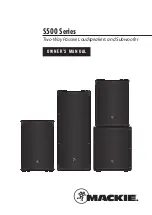
90PUNTPI11 – 90PUNTPI12 – 90PUNTPI13 – 90PUNTPI21 – 90PUNTPI22 – 90PUNTPI23
- 14 -
1.2
GENERAL SAFETY WARNINGS
THE FAILURE TO OBSERVE THESE WARNINGS AND/OR ANY MODIFICATION OF OR TAMPERING WITH THE WELDING
MACHINE WILL RELEASE THE MANUFACTURER FROM ANY LIABILITIES IN THE CASE OF ACCIDENTS TO PEOPLE OR
DAMAGE TO THINGS AND/OR TO THE WELDING MACHINE ITSELF.
Before turning the welding machine on it is essential
that the user knows how to carry out all the operations described in this manual. The manual is an integral of the machine
and must be kept until it is disposed of.
RESIDUAL RISKS:
By residual risks we mean any hazard that could not be totally eliminated with the design or protection means
and any potential hazard that is not evident.
There must not be excessive quantities of dust, acids, corrosive substances or gases etc., on the premises except those
generated by the welding machine.
We recommend keeping an extinguisher near the workstation.
It must not be excessively humid on the premises.
We recommend using an insulating platform.
All maintenance jobs must be done on the machine only after having disconnected it from the electricity mains.
Warning
: high tension stored (600 VDC). Before doing anything inside the welding machine wait at least 6 minutes after
having cleared the voltage
Be very careful where your hands are put when operating the welder; always keep them away from the area of the
electrodes and from the moving parts during the welding cycle and maintenance.
The strong magnetic field generated by the welding machine during welding can be very dangerous for those with
pace-makers. Watches and electronic devices in general placed nearby can be damaged.
Some good sense must be used to reduce the exposition of the human body to the electromagnetic fields:
keep the cables and the welding clamps as far away as possible from the body.
Do not stand between the two cables of the spotter; possibly keep both cables on the same side of the body.
Only use the spot welder on a horizontal plane. If it slants more than 15° with respect to the floor it could tip over.
An incorrect adjustment of welding pressure, an erroneous setting of parameters or malfunctioning of the pneumatic
system can all cause squirts of melted material during welding.
The spot-welder must only be used on a horizontal plane. An inclination of more than 15° with respect to the floor
could cause tipping over. An erroneous adjustment of the welding pressure, a wrong setting of the parameters or bad
functioning of the pneumatic system may cause splashes of melted material during welding.
The welding clamp and the spotter are connected to the same source of current. When one of these devices is used,
the other is always under live. The tool that is not used must therefore be put away in the appropriate insulated
bracket. Otherwise, there may be splashes of welding material and sparks that may damage the equipment or be
dangerous for the operators.
The electrodes become very hot during welding. Do not touch them with your bare hands immediately after welding.
1.3
PREVENTION MEASURES TO BE TAKEN BY THE USER
•
We recommend wearing safety glasses.
•
The user must observe the safety instructions given on the welding machine.
•
Personal protection gear must comply with and be certified by current standards.
•
Signs must be placed in the vicinity of the machine relative to the risks that call for personal protection gear.
•
It is compulsory that the user observe the accident prevention laws in force in his country.
•
Just one operator who has been specifically trained to use welding machines and welding equipment can use the
welding machine.
•
Install a suction unit if the material to be welded produces fumes.
•
The operator must wear glasses to protect his eyes against squirts of melted material, a protective apron and leather
gloves.
•
The operator must avoid wearing metal objects (bracelets, watches etc.)
•
Routine and extraordinary maintenance jobs must only be done on the machine after having disconnected the power
sources (electricity, pneumatic power).
•
Make sure the machine is earthed effectively and protected by a suitable residual current circuit breaker (RCB) or
ground fault circuit breaker (GFCB).





























